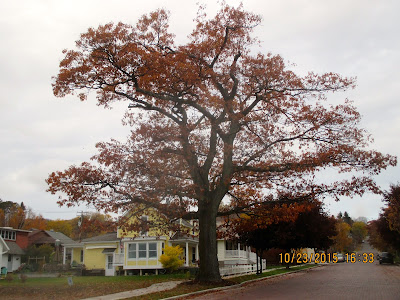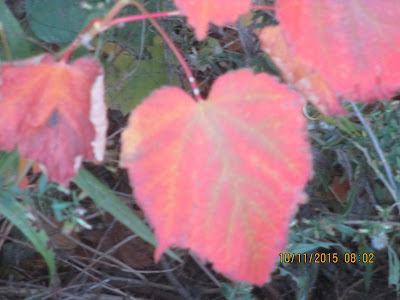 |
| AMERICAN SMOKE TREE... |
 |
| WONDERFUL LATE FALL COLOR... |
 |
| ...ALTERNATE, ENTIRE, MEMBRFANACEOUS LEAVES |
Saturday, 9:30 AM. 46 degrees F at the ferry dock, 42 on the back porch. The wind is SSW, with occasional moderate gusts. The sky is overcast and it has been raining, with an accumulation of about .16". The humidity is 94% and the barometer is falling, now at 29.69".
The native range of the American smoke tree is very narrow, a few lower Midwestern states, but it is quite hardy north and has been widely distributed by the Arbor Day Foundation. It is seldom really tree-like but rather is a large, multiple-trunked shrub.
Unlike the European smoke tree, Cotinus coggygria, which has many colorful hybrids, the American, Cotinus obovatus, is mostly present as the species, and although it has "smoky" flowers they are not particularly effective. It's main attraction is its great fall color, which ranges from yellow to brilliant orange, and appears quite late in the fall color spectrum. Leaves are alternate and entire (without teeth or lobes) and are membranaceous, showing threadlike membranes when a leaf is pulled apart.
The smoke trees are in the Anacardiaceae, the Cashew Family, and are closely related to the sumacs, and have much of the same fall coloration. Theoir natural habitat also is quite similar, and they will grow on poor soils and rocky outcroppings.



























































